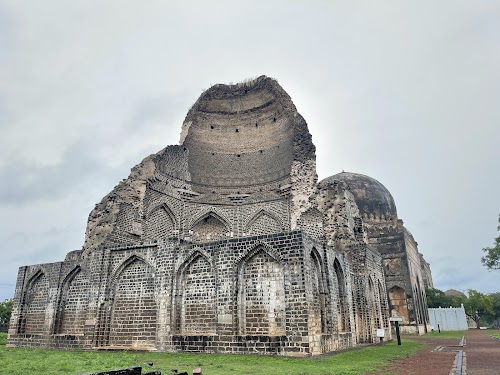
Bahmani Tombs
Bidar, India
- Explore the intricate tomb architecture
- Learn about Bahmani dynasty history
- Photography of historical monuments
- Walk through the expansive courtyards
Known for:
Description:
The Bahmani Tombs in Bidar are a captivating collection of mausoleums showcasing the grandeur of the Bahmani Sultanate. These imposing structures, with their distinct Persian architectural influences, offer a glimpse into the rich history and artistic legacy of the region. The tombs are characterized by their large domes, intricate stucco work, and expansive courtyards. Exploring this historical site provides a fascinating journey through time, allowing visitors to appreciate the architectural brilliance and cultural significance of the Bahmani dynasty. The complex is relatively peaceful, offering a serene environment for reflection and historical appreciation. Don't miss the chance to wander through these majestic structures and imagine the lives of the rulers who once commanded this region.
History:
The Bahmani Sultanate, a powerful Muslim kingdom in the Deccan region of India, ruled from the 14th to the early 16th century. Bidar served as its capital from 1429. The Bahmani Tombs are a testament to the dynasty's power and artistic patronage. Each tomb houses the remains of a Bahmani ruler and often members of their family. The architecture reflects a blend of Persian, Turkish, and Indian styles, showcasing the cosmopolitan nature of the Sultanate. After the decline of the Bahmani Sultanate, the tombs were neglected for a period, but restoration efforts have helped to preserve these historical monuments. They stand as a reminder of a significant chapter in Deccan history, offering insights into the political, social, and cultural landscape of the time.